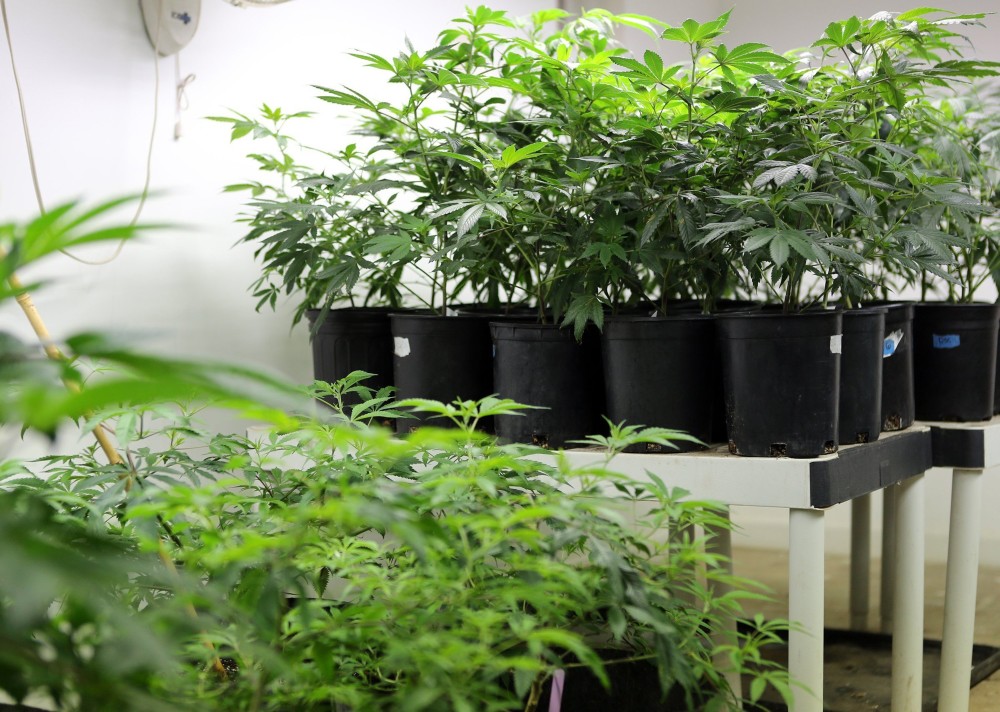By Jeff Ostrowski
The Palm Beach Post, Fla.
WWR Article Summary (tl;dr) Florida voters legalized medical marijuana in a landslide in November 2016, and the new industry has ramped up quickly.
The Palm Beach Post, Fla.
In a sign that Floridians are embracing the state’s freshly minted medical marijuana program, the state’s official cannabis registry has topped 100,000 patients.
The Florida Department of Health counted 100,576 patients as of Friday, and about 2,500 people join the list each week.
“Hitting 100,000 patients in Florida really shows us that people are being helped by medical marijuana,” said Rebecca Allison, director of marketing and product development for Surterra Wellness, a Tampa-based grower and retailer of cannabis.
The quick growth comes despite regulatory obstacles such as state delays in processing patient cards. That challenge seems to have eased in recent months, said Lindsay Jones, chief executive of Curaleaf, a Miami-based pot producer.
“It feels like the pace is increasing,” Jones said.
In another gripe, patients say Florida’s relatively restrictive regulatory regime limits the supply of products available for sale.
Karen Seeb Goldstein, executive director of NORML of Florida and a medical marijuana patient, said the exploding patient count means Florida’s seven pot providers can’t keep up with demand. She said dispensaries often are plagued by shortages of products.
“This is a huge state. The demand is outstripping the supply,” Goldstein said. “Because we have so few growers, it’s like going to a restaurant and them saying, ‘We have turkey. Do you want roast turkey or fried turkey?'”
Curaleaf’s Jones said his company has remedied one supply problem. Hurricane Irma struck just a glancing blow to Curaleaf’s cultivation facility in southwestern Miami-Dade County, but Curaleaf lost a significant chunk of the plants from which it extracts cannabidiol, or CBD.
“It’s not like Hurricane Irma destroyed the facility. It didn’t. It was minor damage,” Jones said. “But a little damage at a cultivation center can have a profound impact.”
Cannabis farms are carefully climate controlled, and even small changes in factors such as sunlight and humidity can damage crops.
“Marijuana plants are very finicky,” Jones said. “We have to control the environment that they’re in, or they will morph and reproduce.”
Curaleaf finally has recovered from the losses and now is fully stocked with CBD, Jones said.
Jones said the state’s other pot producers have experienced shortages, too, as an untested new industry ramps up to meet demand.
“We’ve been growing so fast,” Jones said.
While the state’s new breed of cannabis producers has invested tens of millions of dollars in cultivation operations and distribution networks, the influx of new customers has caused supply hiccups.
Randy Maslow, president of the parent of pot producer GrowHealthy, says a lack of capital has crimped the crops that cannabis growers are producing and the selection of products at dispensaries. But as more patients sign up, producers will broaden their offerings, he said.
“You reach a critical mass at some point,” Maslow said. “By that I mean, the more dispensaries that open, the more doctors that join, the more the program gets out there.”
Florida voters legalized medical marijuana in a landslide in November 2016, and the new industry has ramped up quickly. In addition to the 100,000 patients, more than 1,300 Florida doctors have joined the state’s list of physicians allowed to recommend cannabis. More than 30 marijuana dispensaries have opened, including two in Lake Worth.
“It’s some serious progress,” said Tom Adams, principal analyst at BDS Analytics, a company that tracks the marijuana industry. “The patient count is growing at a pretty good pace. The stigma is going away.”
Smokable marijuana remains illegal in Florida, so the state’s dispensaries sell only oils and extracts. The “flower” form of the plant isn’t available. Nor are edibles such as cookies, candies and granola.
Florida allows the sale of medical marijuana to patients who receive a doctor’s permission. A physician can recommend cannabis to treat a number of conditions, including cancer, Parkinson’s disease, post-traumatic stress disorder and chronic pain.
Doctors typically charge about $200 for an exam, a sum that can’t be covered by insurance because pot remains federally illegal. With a doctor’s note in hand, patients pay the state $75 a year for a medical marijuana card.
Despite the rapid growth of the marijuana rolls, some Floridians who could qualify for legal weed continue to buy pot on the black market, Goldstein said.
“A lot of people are reluctant to get into a registry just because they don’t want their name on a list,” Goldstein said.
Attorney General Jeff Sessions occasionally making headlines with tough talk about the dangers of pot, meaning some potential patients might be afraid to sign up.
“It’s an unfortunate side effect of the federal overhang,” Maslow said.
The state reveals little information about pot patients aside from the overall number of people in the registry.
Citing privacy rules, the Florida Department of Health declined to provide details about patients’ diagnoses or geographic distribution.
Nor does Florida make public dispensaries’ revenue numbers.
Dispensaries say patients typically spend about $150 a month, purchases that aren’t reimbursed by health insurance. Surterra’s Allison said monthly supplies of some products are priced as low as $45.
Entrepreneurs have invested tens of millions of dollars to launch vertically integrated cannabis companies. Pot proponents say that in the next few years, 500,000 Floridians will sign up for the state registry.
As more people sign up, Goldstein said, Florida’s supply product selection should grow more robust. And she said the 100,000 Floridians using marijuana in Florida seek legitimate medical benefits from cannabis.
“This is not just a bunch of stoners who want to get high,” she said.














































































































































































































































































































































































